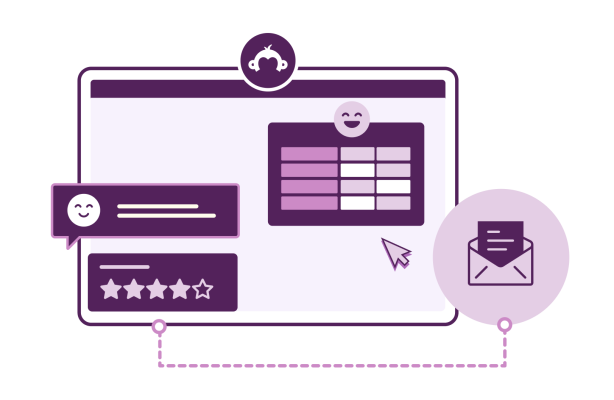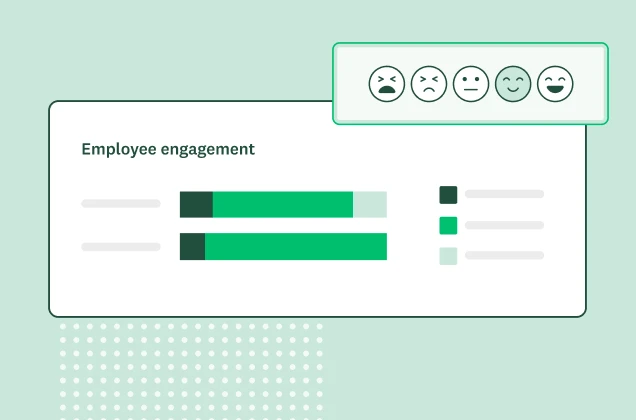How to customize employee training with a data-driven training needs assessment
Learn how to build more effective employee training programs with surveys.

More employers are investing in learning and development programs and better employee training. That’s because employees feel more engaged and valued when their employers take the time to invest in their growth. And it costs organizations a lot more to replace employees than it does to train their existing ones.
But the most effective employee training programs aren’t one-size-fits-all. Each organization, team, or individual has unique needs. So, how can learning and development teams customize training at scale?
They conduct training needs assessments to identify gaps or shortcomings, then create employee training programs to fill those gaps. Here’s how training needs assessments work and how you can conduct one, too.
What is a training needs assessment?
Training needs assessment definition
- Also called training needs analysis, a training needs assessment (TNA) is how organizations identify their current limitations and create a plan for correcting them.
- These limitations can include anything from poor customer satisfaction ratings to gaps in employee knowledge and skills.
- A training needs assessment includes data collection, like observational studies and surveys, which are used to inform key success metrics and develop training content.
- A training needs analysis plan can include training programs customized to fit the needs of an organization at different levels: organizational, occupational, and individual.
The three levels of a training needs assessment
| Level | Considerations | Examples of desired outcomes |
| Organizational | -Company-wide performance metrics -Market trends -Employee sentiment, engagement, retention -Compliance with industry regulations, health and safety standards, and new legislation | - Improve employee satisfaction, engagement - Improve customer satisfaction, loyalty - Improve brand image, sentiment - Increase performance (revenue, share price) |
| Occupational | -Job & role behaviors -Team performance -Using best practices for task completion -Compliance with organizational standards | - Defined or refined team charter - Improved team performance -Compliance with external or internal standards |
| Individual | - Employee job performance - Core competencies - Desired training | - Learn new skills - Career advancement - Increase core competencies |
Benefits of a training needs assessment
Let’s say your company is struggling with its Net Promoter® Score (NPS). Over the last couple of years, customers have become less likely to recommend your brand to others. You know your company needs to do better. But where do you start?
You hypothesize that your employees must become more connected to your customers and your company's mission. You think this lack of connection results in bad service, uninspired products, and poor differentiation in a competitive market.
So you try to address this at all levels: empathy and communication training, customer stories, team building events, a company vision offsite, technical training, continuing education for employees, and more.
That’s a lot of time, money, and resources to spend on solving a problem you haven’t clearly defined. A training needs analysis is a targeted opportunity to figure out:
- Who in your company needs help: overall organization, specific teams, or individuals?
- What are key shortcomings or knowledge gaps? Where are they happening?
- When should training happen: yearly, monthly, weekly, or on a rolling basis?
- How training should be offered: in-person or e-learning, synchronous or asynchronous, tech platform or venue?
Training needs assessments are also important for measuring progress. Especially if you need to build a business case for a certain training program or report on results. Before developing a training program, you can establish a baseline or benchmarks and then compare post-training performance to measure your performance.
You’ll also want to offer regular training to employees to show them you’re investing in their growth and development. It probably goes without saying that having engaged employees is crucial to a positive work culture and productivity.
How to conduct a training needs assessment in 6 steps
1. Identify your purpose and business goals
First, you’ll want to determine the scope of your TNA. Are you trying to plan training for your entire organization, teams (occupations), or individual employees?
- At the organizational level, are you getting everyone up to speed on a new technology or legislation? Does the company have a new mission or vision everyone should align with? Are you dealing with employee attrition?
- At the occupational (team or job) level, is anything at risk if a team doesn’t have the correct legal, safety, or compliance training? Is each team using best practices to complete tasks? Are teams equipped with the right skills to perform their role in the organization?
- At the individual level, which employees have knowledge or skill gaps? How well are their careers progressing? Have they expressed interest in any training or educational opportunities?
It makes sense to consider all three levels when conducting a training needs analysis. That’s because your goals will likely ladder up or trickle down. (For example, training a customer service team to be more empathetic and responsive will likely impact the organization’s customer satisfaction ratings.)
But when conducting the research, you need to figure out the right training to offer if you want to stay focused on your main purpose.
2. Create a plan for a training needs analysis
Once you’ve set your focus area and business goals, it’s time to figure out how you will perform your analysis. If you decide that negative product experiences are causing low customer satisfaction, you’ll want to create a plan to understand the problem. This plan includes:
- How you’re going to collect data (surveys, internal and external interviews, focus groups, product performance metrics, observational data)
- Who you’re going to get the data from (customers, customer service team members, product team members)
- When you’re going to conduct this assessment (time period, frequency)
- Which skills are you going to assess (engineering, customer support, quality control, product management)
3. Collect data on current training needs
Here are a few examples of how you could collect data within your organization:
- For observational data, have product team members sit with customer service representatives to experience customer issues firsthand. Note how often a customer inquiry was (and wasn’t) resolved. Also, note which areas of the product are causing the most issues. This can help you pinpoint any particular teams that could benefit from extra training.
- Conduct internal interviews with the customer service or sales team members to learn more about customer hesitations and problems with your product or service. You might even learn if your teams have trouble explaining areas of the product or troubleshooting with customers.
- Perform external interviews or user research to understand your product's main customer challenges or pain points. You can also interview people who aren’t customers to better understand the competitive landscape and see where you might be falling short. These can be individual interviews, focus groups, or usability sessions where you observe someone trying to use your product or service.
- Send surveys to employees. You can conduct pre-training surveys to identify knowledge and skill gaps. It’s also a good idea to ask employees what training they’d like and how they’d like to receive it. And if you’re trying to boost employee morale or retention, send an employee experience survey to learn where your company can improve.
Customize your training plan
SurveyMonkey makes it easy with survey templates and features designed by experts.
4. Analyze data for training needs
Next, you’ll want to analyze the data you collect to figure out your most pressing training needs. This will also help you create benchmarks you can measure against in the future. These benchmarks will tell you how effective your training is.
You can use advanced survey analysis tools, like charting, combined filters, and open-ended text analysis, to pick up on important trends and patterns.
You’ll also want to see how employees performed in their pre-training survey and compare that against your organization’s expectations.
5. Develop an action plan
You’ve got the data. You’ve pinpointed trends and areas that could use improvements. However, you must weigh this against your organization’s goals, resources, and priorities. Carefully consider each of these, and then prepare a recommendation that includes:
- The purpose of your training and a data-backed explanation of why it’s important
- An overview of training content, how it’ll be conducted, and timeline
- Your training program’s key objectives
- How this training will ladder up to your organization’s goals and priorities
- How you’re going to measure and report on your progress
- How do you maintain and iterate based on feedback and industry changes
6. Design a training program
You know what your training should include, and who should receive it. But for the most effective training, you’ll want to survey employees on their availability, how they like to learn, what motivates them, and more.
If your program goal is to help new employees feel more connected to your company and start contributing faster, you can rely on surveys as a part of your training program. For example, send employees a new hire onboarding survey. After you conduct orientation training, you can send them a new hire training quiz to see how well they remember what they learned.
Once you launch your training program, you’ll want to regularly collect feedback from attendees. Send a training course evaluation survey to see if your content was useful and well-delivered.
Finally, you’ll want to follow up with attendees after a certain period to see if they’ve retained that information and if and how they’ve put it to good use. This will help you make important changes to your training so it’ll continue to be effective.
Why a data-backed training needs analysis is worth it
As you can see, a well-researched TNA takes time and effort. However, generic training programs risk wasting valuable resources. When you use surveys for your training needs analysis, you get the data you need to customize employee training programs and gain insights into the overall employee experience. This helps you attract and retain the talented people who will make your company thrive.
Net Promoter, Net Promoter Score, and NPS are trademarks of Satmetrix Systems, Inc., Bain & Company, Inc., and Fred Reichheld.
Collect the data you need to promote employee growth
Learn how SurveyMonkey can help you build better employee onboarding and training programs.
Discover more resources

HR toolkit: Make employee experience your competitive advantage
HR leaders can use this toolkit to help drive exceptional employee experiences.

How to build a world-class workforce using employee data
How to build a world-class workforce using employee data

Employee Self-Evaluation Form Template
Encourage self-reflection and accountability with our employee self-evaluation form template. Get started and improve your performance review process today!

Motivation vs. engagement: what's the difference?
Learn the difference between employee engagement and motivation, and discover concrete ways to encourage both within your workforce.